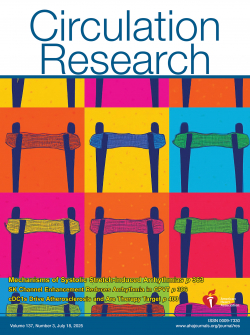 CRC1425 PI Peter Kohl (P17) and colleagues, together with Alex Quinn (Dalhousie University, Canada), have identified a previously unknown mechanism — repolarization-relaxation coupling — that explains why mechanically triggered arrhythmias can occur after a myocardial infarction, in a time window that was previously considered ‘protected’. Their findings were recently published in Circulation Research, and is also featured on the issue’s front cover.
CRC1425 PI Peter Kohl (P17) and colleagues, together with Alex Quinn (Dalhousie University, Canada), have identified a previously unknown mechanism — repolarization-relaxation coupling — that explains why mechanically triggered arrhythmias can occur after a myocardial infarction, in a time window that was previously considered ‘protected’. Their findings were recently published in Circulation Research, and is also featured on the issue’s front cover.
The study demonstrates that arrhythmias can be significantly reduced by targeted modulation of ion channels, calcium handling, and reactive oxygen species. These promising therapeutic targets will now be further evaluated in large animal models to advance the development of new drugs aimed at reducing the risk of sudden cardiac death.
[Original publication]
[Press Release University of Freiburg]








